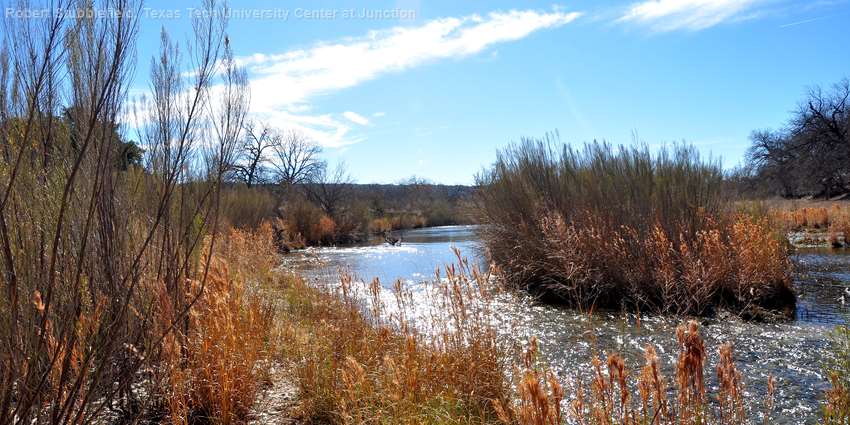The U.S. Environmental Protection Agency (EPA) recently accepted the Upper Llano River Watershed Protection Plan, which will help prevent future declines in water quality and stream flow.
Developers said the plan was accepted as it met the agency’s national guidelines for watershed-based plans and effectively outlined a strategy to conserve and protect water quantity and quality in the watershed.
The Texas Water Resources Institute (TWRI) and the Llano River Field Station at the Texas Tech University Center at Junction assisted the Upper Llano Watershed coordination committee and watershed stakeholders in developing the plan.
“We are very pleased that EPA accepted the Upper Llano River Watershed Protection Plan so quickly. This plan is a result of collaborative efforts of many local, state and federal stakeholders and partners,” said Dr. Kevin Wagner, TWRI deputy director. “Each participant played a vital role in the planning process.”
Dr. Tom Arsuffi, Llano River Field Station director, said watershed protection plans are usually developed to address existing water quality impairments, but the Upper Llano River is currently a healthy ecosystem.
Arsuffi said areas of concern for many watershed stakeholders include loss of spring flow, spread of invasive species and potential for declines in water quality and stream flows.
“The Upper Llano plan was developed to proactively address these potential threats and improve the sustainability of the watershed,” Arsuffi said.
The Upper Llano planning effort was unique because it is part of the Healthy Watershed Initiative, said Tyson Broad, Upper Llano River watershed coordinator. The program is designed to proactively maintain healthy watersheds to preserve the economic and ecological benefits they provide.
Coordination committee member and Upper Llanos Soil and Water Conservation District Director Ward Whitworth said approval of the watershed protection plan provides landowners with the potential for increased funding opportunities to implement brush control practices, manage feral hogs and stabilize eroding stream banks.
“Many of the activities in the plan benefit both the landowner and the Llano,” he said.
Arsuffi said the next step is to kick off implementation.
“We are working to secure needed funding to implement the strategies outlined in the plan and to get the word out on the plan and its findings and recommendations,” he said. “The plan maps out the strategy for implementing water quality management plans, wildlife habitat management, feral hog management and septic system education and outreach.”
The watershed plan is currently available at llanoriver.org/watershed-protection-plan or by contacting Broad at 806.834.1170 or tyson.broad@ttu.edu.
Funding for plan development was provided through a federal Clean Water Act nonpoint source grant to TWRI, administered by the Texas State Soil and Water Conservation Board, from EPA.

